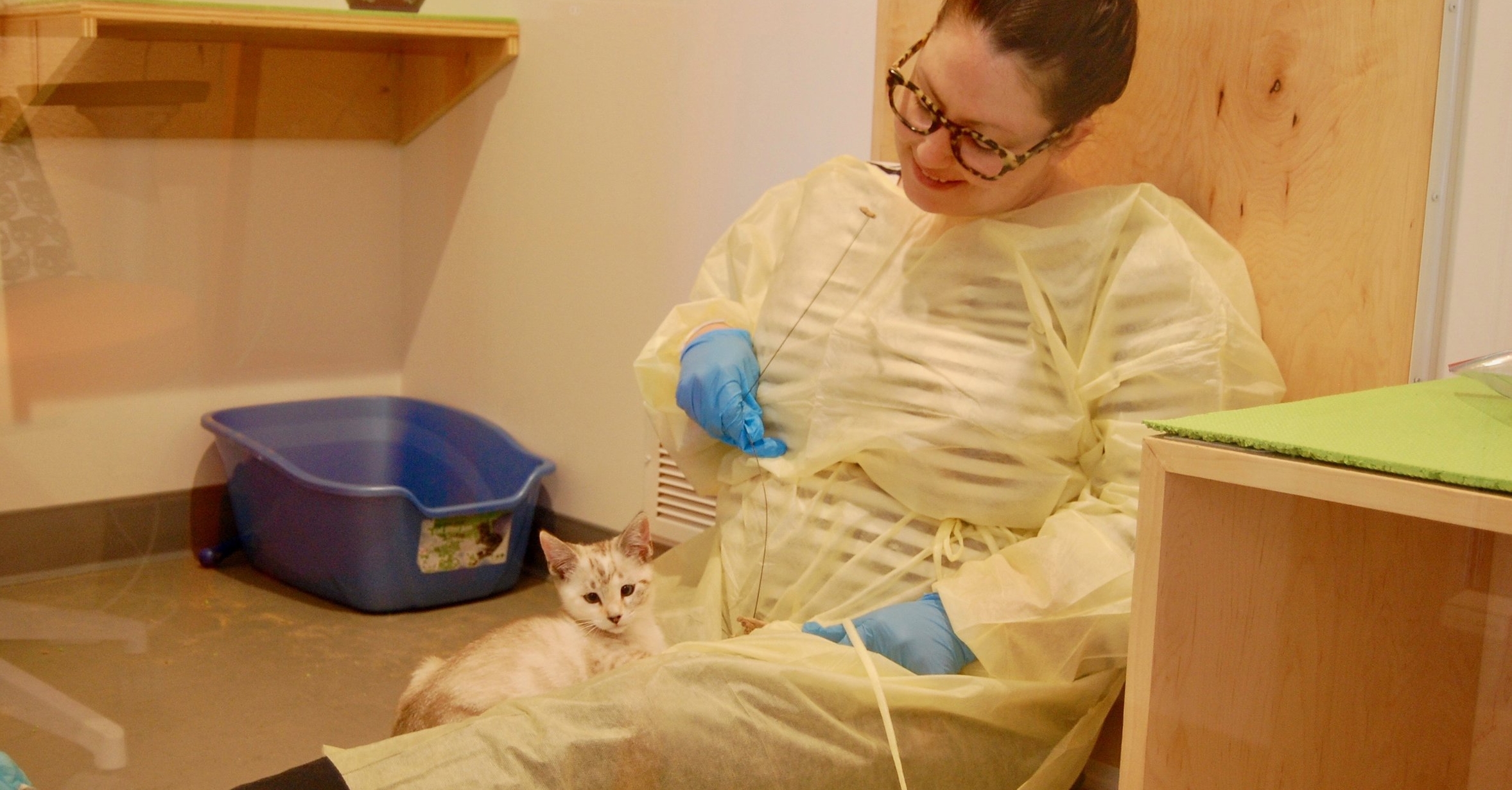The Truth About Ringworm
Ringworm: it spreads every year in shelters and rescues across the country. We're even facing a few cases ourselves at the moment. The word tends to send people running, but the truth is that ringworm is a highly treatable condition. In fact, ringworm, despite its name, has nothing to do with worms at all, and is essentially the same as athlete's foot.
Staff and volunteers wear protective clothing to prevent the spread of ringworm.
Cats who have ringworm usually exhibit itchy, scaly patches of missing fur on their scalp and feet. Although it is contagious, simple precautions can eliminate that risk. In our Adoption Center studios, staff and trained volunteers make sure to wear medical gowns when visiting cats with the condition, and take extra special care to clean the space to prevent further exposure. And as always, we recommend hand sanitizer or hand washing to keep humans and cats healthy. At home, you can prevent its spread by disinfecting surfaces and vacuuming once or twice a week.
Ringworm calls for fairly easy treatment, including twice-weekly wiping with a nontoxic fungal wash and daily application of a topical treatment. It's not glamorous, but it gets the job done. The whole process usually takes about 4-6 weeks before the fungus clears.
Cats like Turtle are still available for adoption and treatment at home is fairly easy.
We're lucky to have the space to treat and care for cats healing from ringworm while still giving them dedicated attention, but it can also easily be treated at home. Fostering, or even adopting a cat with ringworm means another can get out of the shelter. If you are interested in fostering or adopting a cat with ringworm, we are happy to provide all the supplies and support needed. Please email info@cattownoakland.org to learn more.
Back to the Cat Town Blog.


